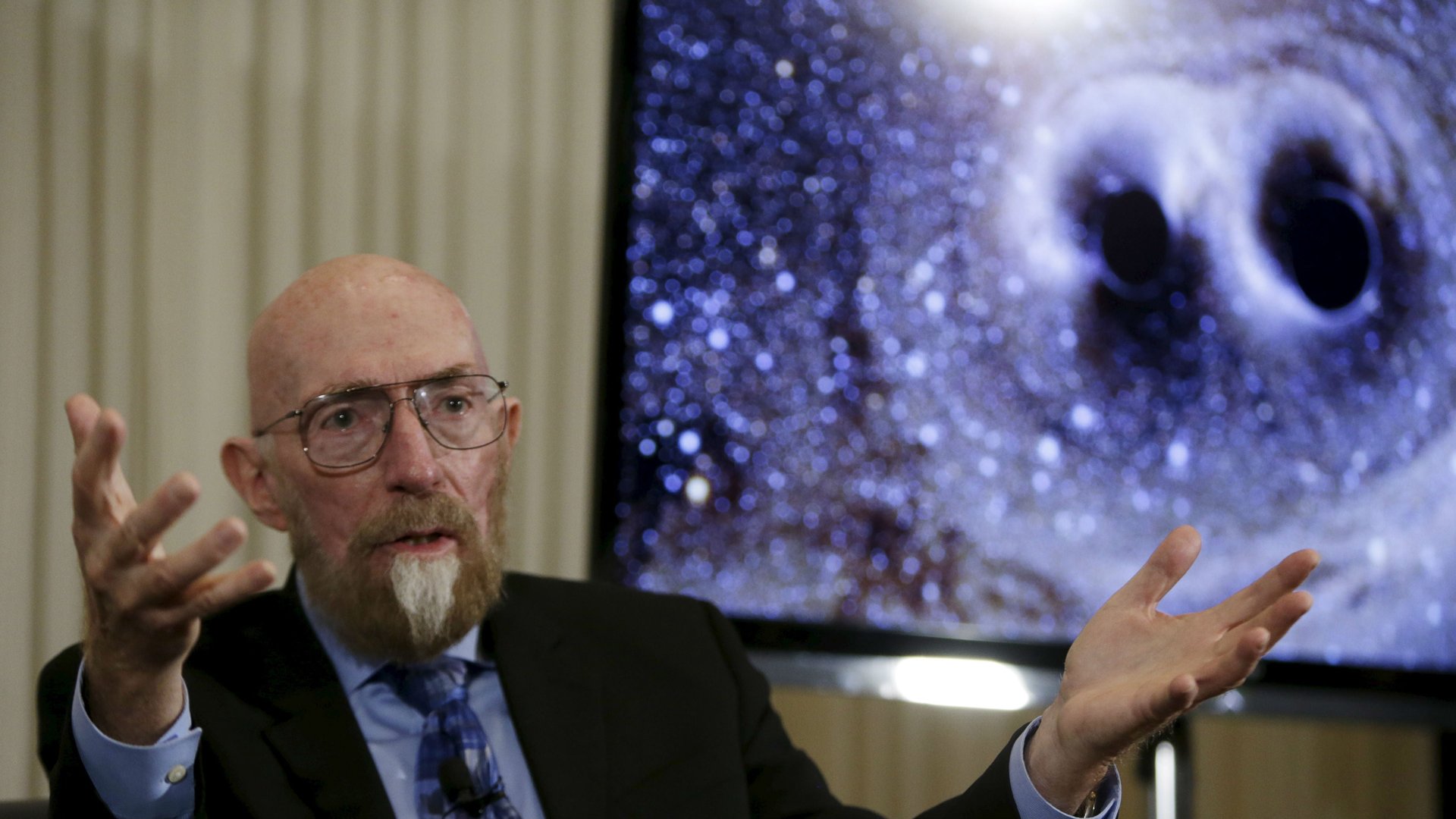This is what gravitational waves sound like
Scientists announced today (Feb. 11) that they have discovered the first direct evidence of gravitational waves—tiny ripples in spacetime that result from the acceleration of massive objects, like black holes or pulsars.


Scientists announced today (Feb. 11) that they have discovered the first direct evidence of gravitational waves—tiny ripples in spacetime that result from the acceleration of massive objects, like black holes or pulsars.
Researchers from the Laser Interferometer Gravitational-Wave Observatory (LIGO) detected these changes by observing their effect on laser beams traveling a long distance through vacuum. The gravitational waves caused tiny, brief variations in the wavelength of the laser light. The researchers converted these variations into sound and shifted the frequency to make it audible to the human ear.
Gaby Gonzalez, a researcher from Louisiana State University on the LIGO team describes the sounds as kind of a chirp. Other have described it as a bubble popping. (I think it sounds like “woop woop” you hear in dance tracks.)
Though that little blip of noise is only a construct, what it represents are tiny contractions and stretchings in spacetime, the very fabric of the universe, that resulted from two massive black holes colliding.
Dennis Overbye from the New York Times remarked (paywall): “If replicated by future experiments, that simple chirp, which rose to the note of middle C before abruptly stopping, seems destined to take its place among the great sound bites of science, ranking with Alexander Graham Bell’s “Mr. Watson—come here” and Sputnik’s first beeps from orbit.”